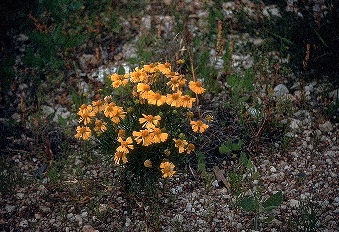|

Bitter Sneezeweed aka Helenium autumnale and Yellowdicks
Helenium amarum is a species of annual herb in the daisy family known by the common names yellowdicks, yellow sneezeweed, and bitter sneezeweed. It is native to much of the southeastern United States and northern Mexico, and it is present elsewhere in North America as an introduced species. This is a multibranched bushy erect plant reaching 20 to 70 centimeters in height and thickly foliated in narrow to threadlike leaves. The tops of stem branches hold inflorescences of many daisy-like flower heads. Each head has a rounded center of golden yellow disc florets and a fringe of usually lighter yellow ray florets which are reflexed away from the center. The fruit is a tiny achene about a millimeter long. This herb is weedy in some areas. The plant is somewhat toxic to mammals and insects due to the presence of the lactone tenulin.
For horses this weed is poisonous. Since it is often found in pastures one must be mindful when grazing your horses on it. There are toxins in Bitter Sneezeweed that cause gastrointestinal problems, loss of appetite. This culprit can also cause neurological disorders in your horse. For causing your horse problems bitter sneezeweed is at its worst while flowering in late summer. Your local Cooperative Extension Service can help you in your control of this weed pest.
|